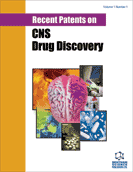Abstract
Networks controlling ingestion-related peptides are also known to be the targets and signals for numerous other systems. Yet, their topological properties are still ill understood. The Ingenuity Pathway Analysis (IPA) was employed to represent molecules engaged in feeding as nodes, and the interactions between them as edges. Using extracted molecules as ‘seeds’ for core analysis it was possible to scrutinize some of the complex relationships of sub-networks and the socalled ‘motifs’ well outside the neighborhoods of their classical roles. Contrary to the requirements for modular structure, the orexigenic and anorexigenic neuropeptides do not represent two types of modules. They are densely interconnected. Functional annotations showed that the same molecules are recruited ad-hoc from a larger ‘repository’ and assembled into dynamic networks for executing diverse physiological functions and behaviors. Some molecules clustered in motifs appear as the multipurpose entities for cell-to-cell signaling, organismal development, cellular movement, growth and proliferation, endocrine system development and tissue morphology, etc. that apparently become active in early ontogeny. Based mostly on neuropeptide Y (NPY), my arguments here will focus on the potential benefits of exploring motifs in network controlling ingestion for generating insights for polypharmacy of obesity-related targets and co-morbid disorders. Recent patents describing new NPY receptor antagonists directed to treat obesity and cardiovascular disorders were cited.
Keywords: Networks, modules, motifs, orexigenic and anorexigenic peptides, obesity treatment, polypharmacology, neuropeptide Y
 12
12

